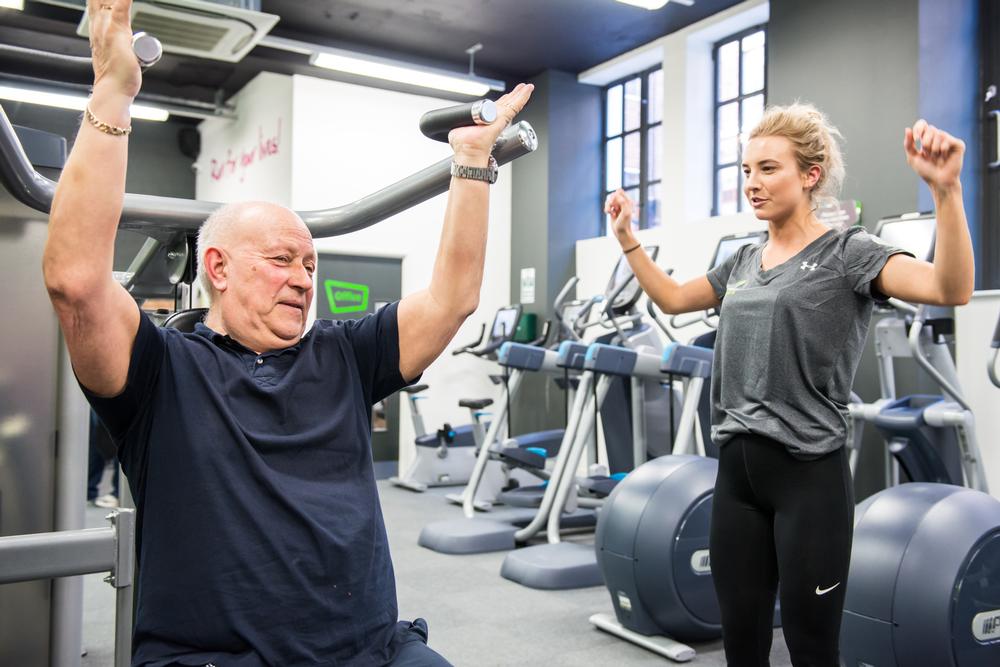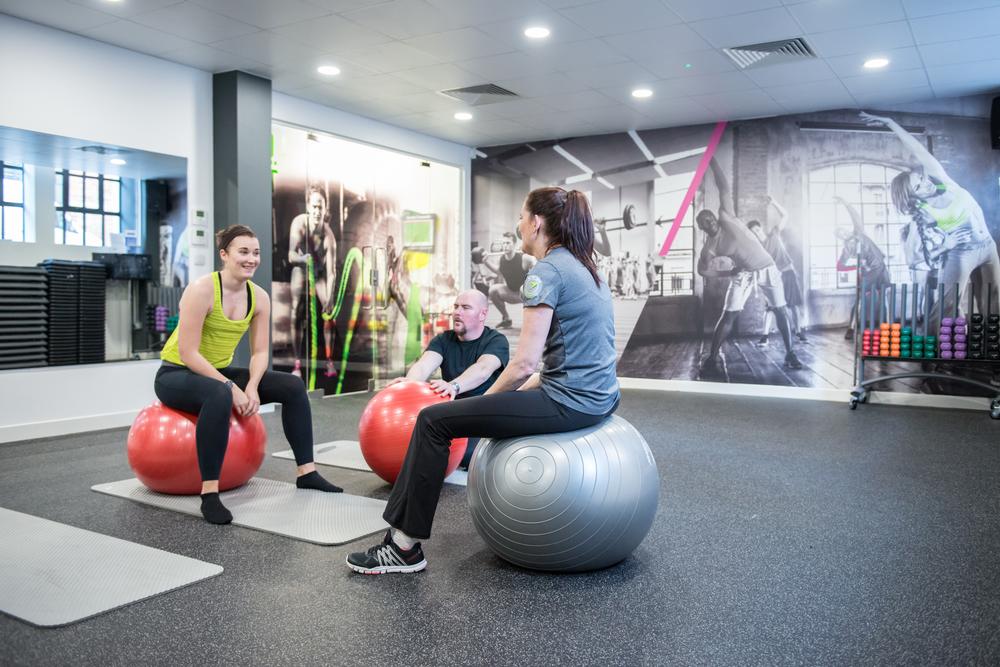hen we launched in 2003, we had nothing other than one club and grand ambitions. We wanted to create the first UK fitness club franchise but had no idea whether it would actually work,” says Jan Spaticchia.
Taking stock of how far the énergie group has since come, he adds: “There were just three of us back then: myself, Steve Philpott and David Beattie. We worked from my dining room in Milton Keynes. Nobody was getting paid.”
Fast forward 14 years and things have certainly changed. Today, the énergie group has a network turnover of over £26m, just over 100 clubs across five countries, and according to its CEO Spaticchia, “we’re growing faster than we’ve ever grown before”.
This growth is something the brand is now focused on propelling with a group-wide rebrand of “76 UK clubs over a twelve-month period, alongside 35 new site openings”, says Spaticchia.
“We currently have Fit4less – our budget operation – and énergie fitness clubs – our mid-market operation. We’re rebranding the entire portfolio under the new énergie fitness brand, under the strapline ‘where you belong’,” he explains.
“Effectively we’re on a mission to democratise fitness. Our core purpose is to empower people to transform their lives, and to do that we want to provide a ‘safe’ place where people really feel they belong… at an affordable price!”
An evolution in progress
The current rebrand is just the beginning of the wave of change afoot.
“We’ve already launched and will be growing our group functional fitness product The Yard, as our new boutique division. We’ll launch a second premium product later this year and will offer alternative streams of franchising that fill a gap that currently exists within the franchise marketplace,” says Spaticchia.
“It’s a much smaller investment for a franchisee, and therefore opens up the opportunity to people who can’t afford a full énergie fitness club. The Yard allows them to franchise with us through a smaller format.”
So why boutiques, and why now? He explains: “We’ve been watching the market for around 12 months and have done a lot of work to ensure that when we enter the boutique sector, we’re doing it with a product that’s can lead the market. That’s what we’re going to be doing as we roll out The Yard over the next 12 months.”
Then there’s the introduction of a new ‘host’ role – to welcome and assist members – within all énergie clubs. Spaticchia says: “I don’t quite understand why our contemporaries in the sector have decided that staffing is the best place to cut costs. If I think about my experience of flying on low cost airlines, they don’t reduce costs by removing the pilot and the flight crew, they do so by carefully engineering the product to ensure there’s no fat in the system.
“So at our clubs the gym floor is always staffed, and we believe that it’s very important that when somebody comes to one of our clubs they feel like they’re somewhere they belong. This is what our new host role will achieve.”
Accidental beginnings
While the énergie group’s current rebrand plans follow years of planning, Spaticchia admits “the franchise model for énergie actually started quite by accident”.
He explains: “At the time, Steve Philpott and I were working on a project with Barclays Private Equity, who were looking at the fitness sector as being rife for consolidation.
“We worked with a group of analysts, looking at how we could bring together a group of 10 fitness operators, remove their separate head offices and create a single bigger group of around 100 clubs.”
It was Whitbread Beer Company’s ex-marketing director, Philpott, who helped spark the franchising idea, says Spaticchia (see ‘About Steve Philpott’, p38). “Steve said: ‘This looks like tenanting’ as it was very much like the tenanting of pubs he’d experienced while at Whitbread. That’s really where the idea came from. We were the first to look at franchising in the UK fitness sector, but when we looked at the American and Australian markets, it seemed to work there, so why not here?”
Being first to the UK market gave the group a huge edge, allowing it to grow quickly from day one. “The business took off very quickly. By Christmas 2003, we’d secured our first five franchisees. It was an absolutely astonishing success and it happened very quickly,” Spaticchia says. “But back then, there were no other franchisors, no competition and we really had the market to ourselves.”
Now facing stiff competition from the growing number of fitness franchises in the UK, the lifelong entrepreneur admits the company’s approach to business has had to change significantly. “For the first three to four years of the business, we had the market to ourselves. If a person wanted to franchise a fitness club, we were really their only choice. While we were very good at it, we probably didn’t have to be on our toes as much as we do these days,” he says.
“Now many American and Australian franchisors have now come to the UK market, and although they’ve come in with a very specific brand, they’re in our space and looking for the same people we are – those who’ve always dreamt of owning their own fitness clubs. So by default, they’re competitors.”
It’s an observation that begs the question: is there enough space in the fitness franchise market? “We think it’s wide open for development,” Spaticchia says confidently. “While most of the franchise offerings out there are all the same, they’re very successful models that have proved themselves overseas. Fortunately, having been one of the first in the value franchise space, we believe we have an advantage – an instinctive insight into this marketplace.”
International expansion
Although the énergie group is a UK brand, its international presence has been steadily growing for years. “Our main international interests are in Ireland. We have 11 sites out there right now, and another 15 to 20 sites will open over the next 12 months,” says Spaticchia.
“We also have two sites in Latvia and one in Poland, with the latter forming a jumping off point for a major surge into the Polish market next year. We’re also about to sign our first site in Africa – in Nairobi, Kenya – and we’re planning to see real international growth over the next 12 to 24 months.”
This undoubtedly eclectic mix of international franchise locations prompts a question about the company’s site selection process.
“It’s becoming more scientific now,” Spaticchia answers, although he admits that the company’s Latvian site was created after a Latvian franchisee discovered the énergie brand online and asked to get involved.
“Now, we’re a lot more scientific,” he reiterates. “We’re focused on deliberate rather than opportunistic international growth, so we’re looking at the emerging markets, mainland Europe, Eastern Europe, the Middle East and Africa – markets that are really starting to discover franchising.”
Floatation rumours
“It was my decision to pull the float at the last minute and I’m glad I did,” says Spaticchia, referring to IPO plans that were abandoned at the eleventh hour in early 2012.
He continues: “We were literally days before float, we’d done the whole book build and everything was looking very exciting, but it was the weekend of the Greek debt crisis, and over that weekend stock market sentiment plummeted. It showed the volatility of the marketplace, so we pulled the float and I’m glad we did because I think we would have under-valued ourselves.”
So does the group have plans to float? in the future? “Last year we sold a very small share of the business through the crowdfunding site Crowdcube. It was just over 3 per cent and doing so allowed our franchisees to become shareholders. The Crowdcube deal valued the business at around £15m,” says Spaticchia.
“There will come a point in the next 12 to 24 months when you will see us look to crystallise the value of the business, this could be through an IPO or maybe the sale of some stock to a private equity company. It could be either, so watch this space.”

























































